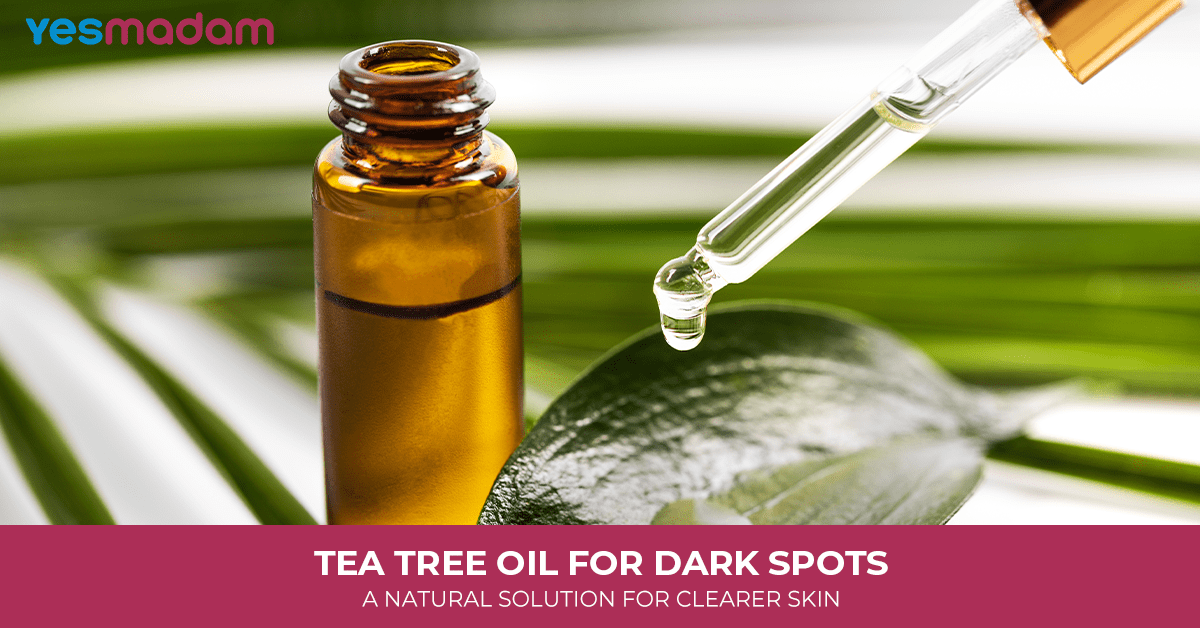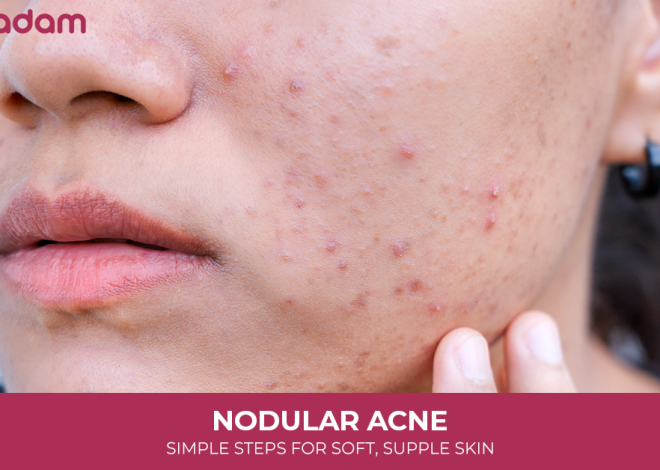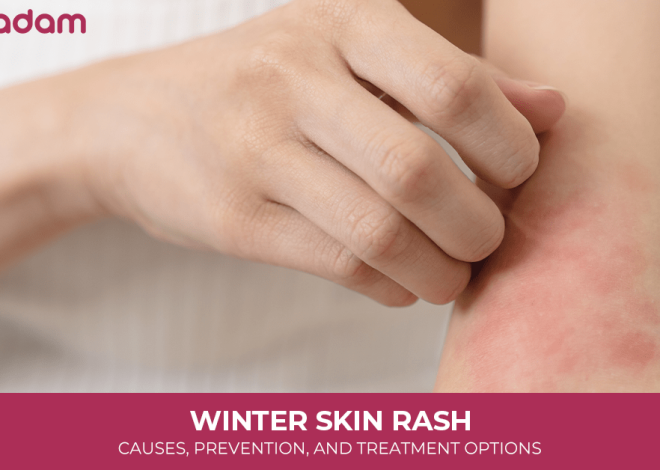
Tea Tree Oil for Dark Spots: A Natural Solution for Clearer Skin
Dark spots and uneven skin tone can be frustrating to deal with. While there are countless creams and treatments in the market, many people prefer turning to natural remedies that are gentle and effective. One of the most popular natural options is tea tree oil for dark spots. Known for its antibacterial, anti-inflammatory, and healing properties, tea tree oil has gained a reputation not only for acne care but also for helping with pigmentation issues.
If you’ve been wondering whether tea tree oil can help with hyperpigmentation, how to use it properly, and what results to expect, this guide will cover everything you need to know in a practical, conversational way.
Table of Contents
Understanding Dark Spots and Pigmentation
Before diving into how tea tree oil works, let’s briefly understand what pigmentation is.
- Pigmentation refers to the coloring of your skin caused by melanin, the natural pigment produced by cells in the skin.
- Dark spots or hyperpigmentation happen when excess melanin is produced in certain areas. This can result from acne scars, sun exposure, hormonal changes, or even skin injuries.
- While not harmful, pigmentation can affect confidence and make skin appear uneven.
This is why many turn to natural remedies like tea tree oil to manage these skin concerns without resorting to harsh chemical treatments.
What is Tea Tree Oil?

Tea tree oil is an essential oil extracted from the leaves of the Melaleuca alternifolia plant, native to Australia. For centuries, indigenous communities have used it as a traditional medicine to heal cuts, burns, and infections. Today, it’s one of the most widely used essential oils in skincare, especially for acne-prone and pigmented skin.
Key Properties of Tea Tree Oil
- Antibacterial: Helps fight acne-causing bacteria.
- Anti-inflammatory: Reduces redness, swelling, and irritation.
- Antiseptic: Speeds up the healing process of wounds and scars.
- Skin-rejuvenating: Promotes cell turnover, aiding in fading dark spots.
These qualities make tea tree oil an excellent choice for those looking to naturally address pigmentation issues.
Tea Tree Oil for Pigmentation: Does It Work?
When it comes to tea tree oil for pigmentation, research and anecdotal evidence suggest that it may not directly bleach or lighten dark spots like chemical treatments do. Instead, it works in an indirect yet effective way:
- Controls Acne: Many dark spots come from post-inflammatory hyperpigmentation caused by pimples. Tea tree oil reduces acne, preventing new dark spots.
- Soothes Inflammation: Less inflammation means less chance of developing stubborn marks.
- Promotes Healing: Tea tree oil encourages faster skin repair, gradually fading existing spots.
- Balances Skin Tone: With consistent use, it can improve overall clarity and brightness.
So, while it may not give overnight results, tea tree oil helps reduce pigmentation naturally over time.
Is Tea Tree Oil Good for Pigmentation?
The short answer: Yes, tea tree oil is good for pigmentation—especially if your dark spots are caused by acne, irritation, or inflammation.
However, it’s important to note:
- It’s not a bleaching agent. Don’t expect instant lightening.
- Results vary depending on skin type and consistency of use.
- It should always be diluted before application to avoid irritation.
Does Tea Tree Oil Reduce Pigmentation?
Yes, tea tree oil does reduce pigmentation, but gradually. Its main strength lies in preventing new pigmentation while slowly improving the appearance of old marks. If you’re dealing with mild to moderate dark spots, regular application can make a visible difference.
For deeper, stubborn pigmentation (like melasma), it may not be as effective alone, but it can complement other treatments.
Does Tea Tree Oil Help Hyperpigmentation?
Absolutely. When people ask, “Does tea tree oil help hyperpigmentation?”, the answer is yes—through its ability to calm skin, heal blemishes, and encourage regeneration. It’s particularly helpful for post-acne hyperpigmentation, which is common in people with oily or acne-prone skin.
How to Use Tea Tree Oil for Pigmentation

If you’re curious about how to use tea tree oil for pigmentation, here are some safe and effective methods:
1. Spot Treatment (Diluted)
- Mix 1–2 drops of tea tree oil with a carrier oil (like coconut oil, jojoba oil, or almond oil).
- Apply directly to dark spots with a cotton swab.
- Leave it overnight and rinse in the morning.
2. Add to Your Moisturizer
- Add 2–3 drops of tea tree oil into your daily moisturizer.
- Apply evenly to your face to prevent breakouts and improve pigmentation.
3. DIY Face Mask
- Mix 2 drops of tea tree oil, 1 tablespoon of honey, and a few drops of lemon juice.
- Apply as a mask for 10 minutes and rinse off.
- This works as a brightening and clarifying mask.
4. With Aloe Vera Gel
- Blend tea tree oil with aloe vera gel for a soothing anti-inflammatory treatment.
- Great for sensitive skin prone to redness and marks.
Important Tip: Always do a patch test before applying tea tree oil to your face, as it may cause irritation in some people.
Benefits of Using Tea Tree Oil for Dark Spots
Tea tree oil is a natural essential oil derived from the leaves of the Melaleuca alternifolia plant. It is well-known for its antibacterial, antifungal, and anti-inflammatory properties, making it a versatile skincare remedy. When used properly, it can be highly effective in reducing dark spots and improving skin health.
- Natural and Chemical-Free: Unlike harsh bleaching creams or chemical treatments, tea tree oil provides a gentle and natural approach to fading pigmentation. This makes it a safer option for those with sensitive skin or people who want to avoid synthetic ingredients.
- Prevents Breakouts: Many dark spots are caused by acne scars. Tea tree oil has antibacterial properties that fight acne-causing bacteria, helping prevent new pimples. By reducing breakouts, it also tackles the root cause of post-acne pigmentation.
- Affordable: A little goes a long way with tea tree oil. Since only a few drops are needed when diluted with a carrier oil, a small bottle can last for months, making it a cost-effective addition to your skincare routine.
- Multi-purpose: Beyond pigmentation, tea tree oil is widely used to treat dandruff, fungal infections, athlete’s foot, and even minor cuts or scrapes. Its versatility means you’re investing in a multi-use natural remedy rather than a single-purpose product.
- Boosts Skin Confidence: Over time, regular and safe use of tea tree oil can help achieve clearer, more even-toned skin. This can boost self-confidence by minimizing the appearance of blemishes and dark spots.
Precautions When Using Tea Tree Oil

Although tea tree oil offers many benefits, it must be used with care to avoid irritation or side effects.
- Always Dilute It: Pure tea tree oil is highly concentrated and can cause redness, burns, or rashes if applied directly. It should always be mixed with a carrier oil like coconut oil, almond oil, or jojoba oil before application.
- Avoid Overuse: More is not better. Applying tea tree oil too frequently can dry out your skin, leading to irritation. Limit usage to once or twice daily.
- Not for Ingestion: Tea tree oil is toxic if swallowed and should never be taken internally. Always keep it out of reach of children and pets.
- Consult a Dermatologist: If you have sensitive skin, allergies, or severe pigmentation, it’s best to get professional advice before adding tea tree oil to your routine.
Other Natural Remedies That Pair Well with Tea Tree Oil
While tea tree oil works well on its own, combining it with other natural ingredients can maximize its effectiveness and provide complementary benefits.
- Aloe Vera: Known for its cooling and soothing effects, aloe vera calms inflammation and helps heal acne scars, enhancing the action of tea tree oil.
- Rosehip Oil: Packed with Vitamin C and essential fatty acids, rosehip oil promotes skin regeneration and brightening, making it a perfect partner for targeting dark spots.
- Turmeric: With natural anti-inflammatory and skin-lightening properties, turmeric reduces redness and pigmentation while giving skin a healthy glow.
- Green Tea Extract: Rich in antioxidants, green tea fights free radicals that damage skin and worsen pigmentation, supporting overall skin health.
Lifestyle Tips for Preventing Dark Spots
Even with natural remedies, lifestyle choices play a big role in maintaining clear, even-toned skin.
- Use Sunscreen: Sun exposure is the leading cause of pigmentation. Daily application of a broad-spectrum sunscreen (SPF 30 or higher) is the most effective way to prevent dark spots from worsening.
- Stay Hydrated: Drinking enough water keeps your skin supple and promotes faster healing, which reduces the appearance of scars and dark patches.
- Eat Antioxidant-Rich Foods: Foods like berries, leafy greens, and nuts provide essential vitamins and antioxidants that protect skin from oxidative stress and repair damage.
- Avoid Picking Pimples: Squeezing or scratching pimples can worsen inflammation and leave behind dark marks. Hands off for healthier skin!
Conclusion
Using tea tree oil for dark spots is a natural, safe, and affordable way to improve skin clarity and reduce pigmentation over time. While it may not work as fast as chemical treatments, its healing properties make it an excellent choice for those who prefer gentle skincare solutions. Whether you’re wondering “is tea tree oil good for pigmentation?” or trying to figure out how to use tea tree oil for pigmentation, the key is consistency, patience, and pairing it with a healthy skincare routine.
Over time, you’ll notice clearer, more even-toned skin, and that natural glow you’ve been aiming for.
FAQs
1. Can tea tree oil remove dark spots permanently?
Tea tree oil can fade dark spots gradually, but maintaining results requires consistent skincare and sun protection.
2. How long does tea tree oil take to show results on pigmentation?
Most people see improvement within 4–6 weeks of regular use, though results vary based on skin type.
3. Can I use tea tree oil directly on my face?
It’s not recommended to use undiluted tea tree oil, as it can cause irritation. Always mix with a carrier oil.
4. Is tea tree oil safe for sensitive skin?
Yes, but do a patch test first. Sensitive skin may need extra dilution with aloe vera or jojoba oil.
5. Does tea tree oil help with melasma?
It may not be strong enough for melasma on its own, but it can support other treatments by reducing inflammation.
6. Can I mix tea tree oil with vitamin C serum?
Yes, but apply them at different times of day (Vitamin C in the morning, tea tree oil at night) to avoid irritation.
7. Is tea tree oil good for oily skin with pigmentation?
Yes, it helps balance oil production and reduces acne-related dark spots.
8. Can tea tree oil be used daily for pigmentation?
Yes, but limit to once or twice daily and always dilute to avoid over-drying your skin.
9. Does tea tree oil lighten acne scars?
Yes, it helps fade post-acne marks by reducing inflammation and encouraging skin repair.
10. Should I stop using tea tree oil once my dark spots fade?
You can continue using it to prevent new pigmentation, but consistency with sunscreen and skincare is more important for long-term results.



